TWO LIVES
Chapter Three
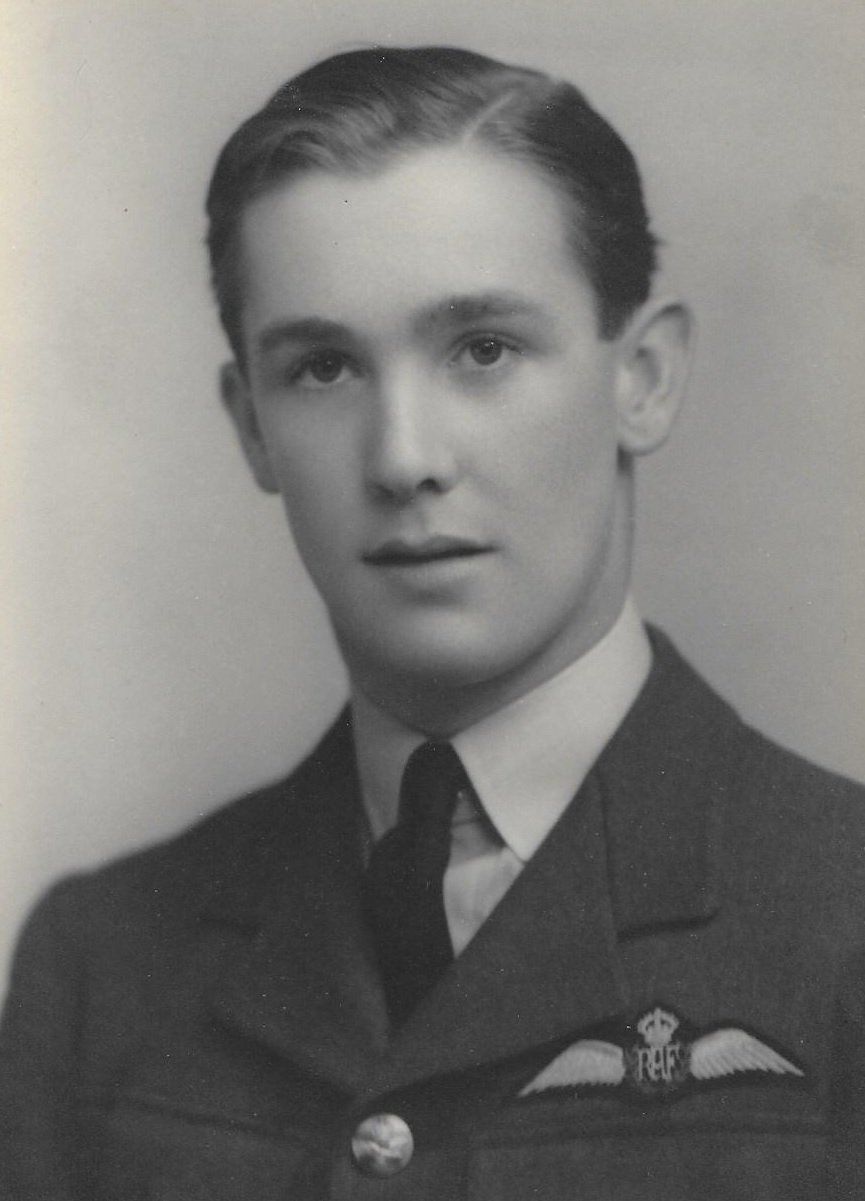
Tommy's first portrait in uniform
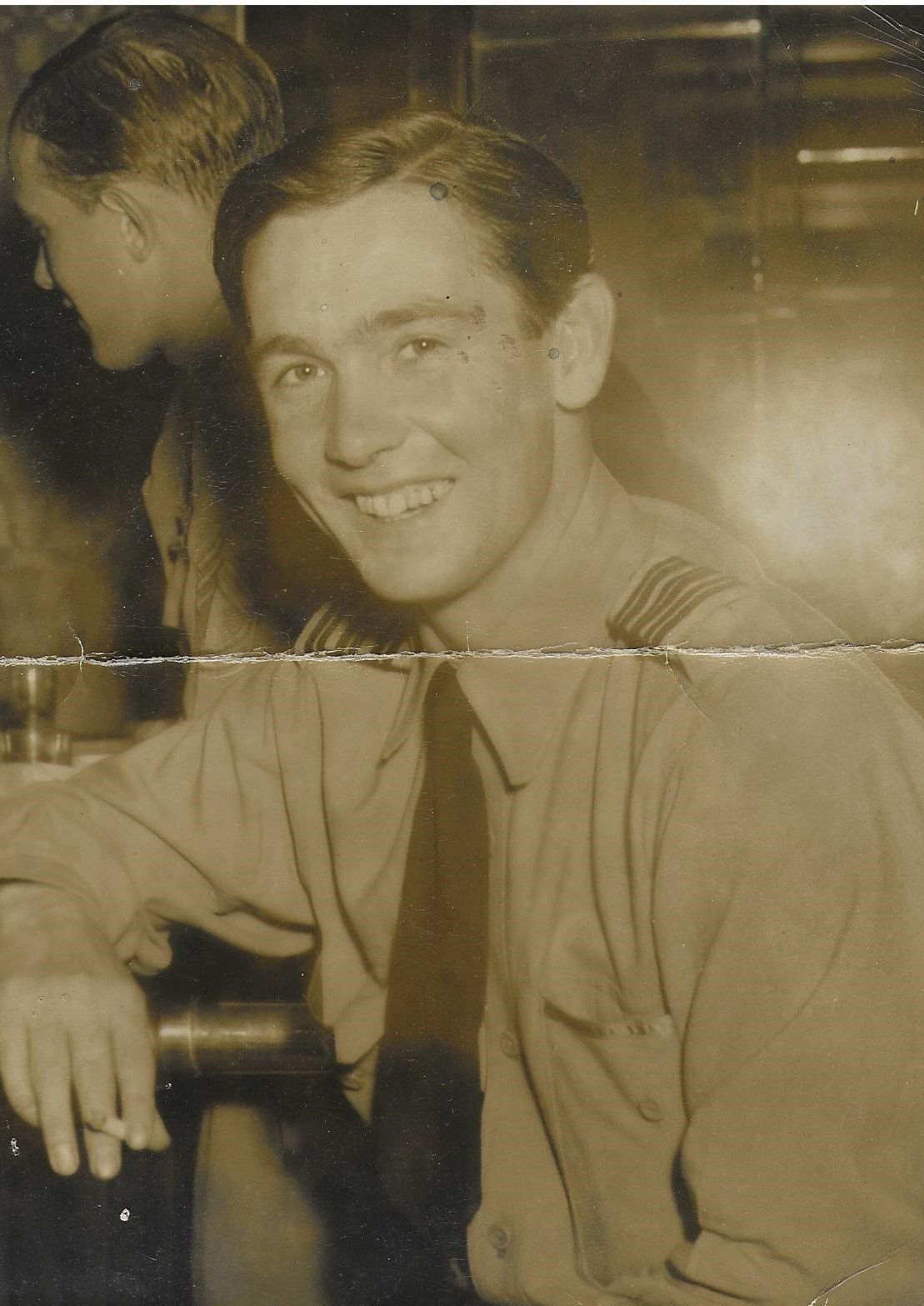
Tommy in the pub, always with cigarette in hand
CHAPTER THREE: Tommy joins the war effort
Tommy started his flying training on Tiger Moths in October 1938 at RAF Prestwick. By December he had done nearly 60 hours flying and his proficiency as a pilot was described as 'average'. The RAF General Duties branch published in the London Gazette of 27th December 1938 that he was granted a short service commission as an Acting Pilot Officer. At the beginning of 1939 he progressed to Harvards and was awarded his flying badge in June from No 12 Flying Training School at RAF Grantham. By 1940 he was flying Hawker Henleys, Hurricanes and Spitfires, presumably as part of the Ferry Pilots pool as his logbooks record that he mainly flew between RAF bases. On 7th June 1940 his adventure really began. He was one of a group of pilots from RAF Hullavington who were called on to deliver 6 Hurricanes to Egypt to help with the war effort. Tommy was a relief pilot and flew in the accompanying Hudsons when he was not piloting his Hurricane. They called in at Tangmere for refuelling before heading for Bordeaux and Marseilles. Upon landing at Marignane, one of the pilots ran into an old bomb crater and the plane tipped onto its nose. Pilot and plane had to be left behind and the remaining five Hurricanes and two Hudsons set off for Tunis. There they encountered more problems as two of the Hurricanes had defective fuel pumps and would be unable to make it from Tunis to Mersa Matruh as intended. The Squadron Leader in charge of the convoy asked for permission to stop in Malta and, at first, the Air Ministry refused but the decision was reversed after a signal from the Governor of Malta, Sir William Dobbie, who requested the Hurricanes should be diverted to the island to help in its defence. The war in Malta was already underway, the first air raid had taken place on 11th June, and the tiny island only had three ancient bi-planes, Gloster Gladiators, (which were to be famously christened Faith, Hope and Charity) to defend itself against Mussolini's Regia Aeronautica so the Hurricanes could not have arrived at a better moment. According to Tommy's log book he arrived on 19th June at Luqa airfield. He was told that he would remain on attachment to the Hal Far fighter flight which would become 261 squadron.
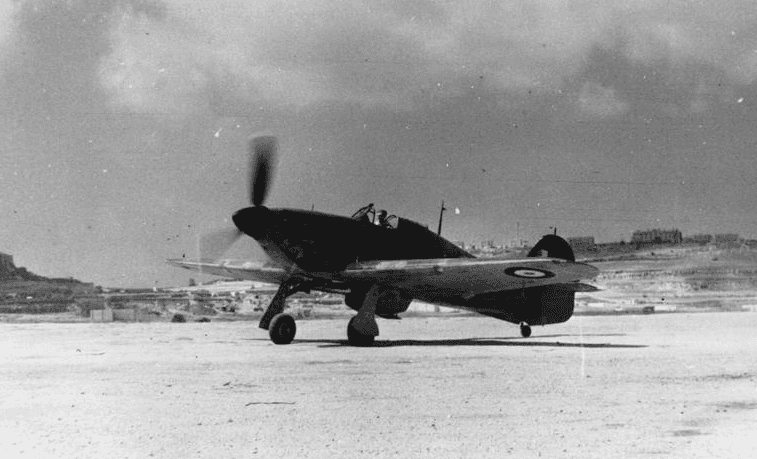
Hurricanes arrive in Malta (courtesy IWM)
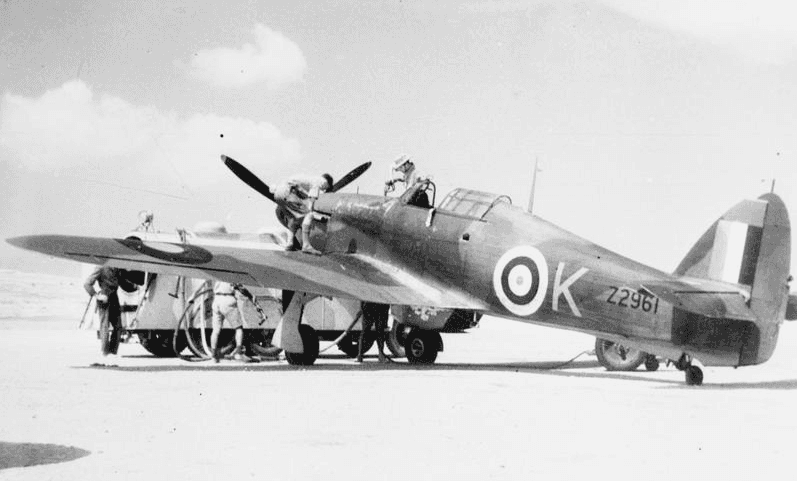
His first combat mission in a Hurricane is recorded on 28th June. After that, he flew in Hurricanes and the famous Gladiators. Malta was of huge strategic importance in the Mediterranean but it was incredibly vulnerable. There was no radar and the pilots could only 'scramble' once the enemy was overhead. To that end, they often sat for hours in their boiling hot cockpits to make sure they could get airborne quicker. They complained about getting terrible piles! But despite this unglamorous detail, the local population treated the pilots as heroes and although they were being battered by Italian bombing raids, there were still plenty of watering holes where they could have an evening out and forget about the hardships of war. One of his colleagues, Pilot Officer Jock Barber, told me that Tommy had an imaginary Lebanese character that he used to entertain them with, going to town with his a comic accent. It was light relief from the serious business of fighting the Italians. Tommy's logbook records 36 sorties in Hurricanes and Gladiators from June until October with two 'probables' (destruction of the enemy). During one combat mission a bullet caused his fuel tank to explode and, as it was at the front of the plane, it caused terrible burns to his hands. He managed to land safely and continued his flying duties shortly afterwards but his burns became infected and he had to be admitted to hospital where they removed all his fingernails before bandaging up his hands. Whilst he was convalescing, he was looked after by the wife of Wing Commander WDC 'Pop' Mitchie's wife, Merc. Pop and Merc would become life-long friends. After he was passed fit for flying he took part in three interception patrols but he had to wear white cotton gloves to protect his hands. But he was still having problems with the burns and had to go back into hospital in December and shortly afterwards he was sent back to the UK. His commanding officer described his proficiency in flying the Hurricane as 'above the average'.
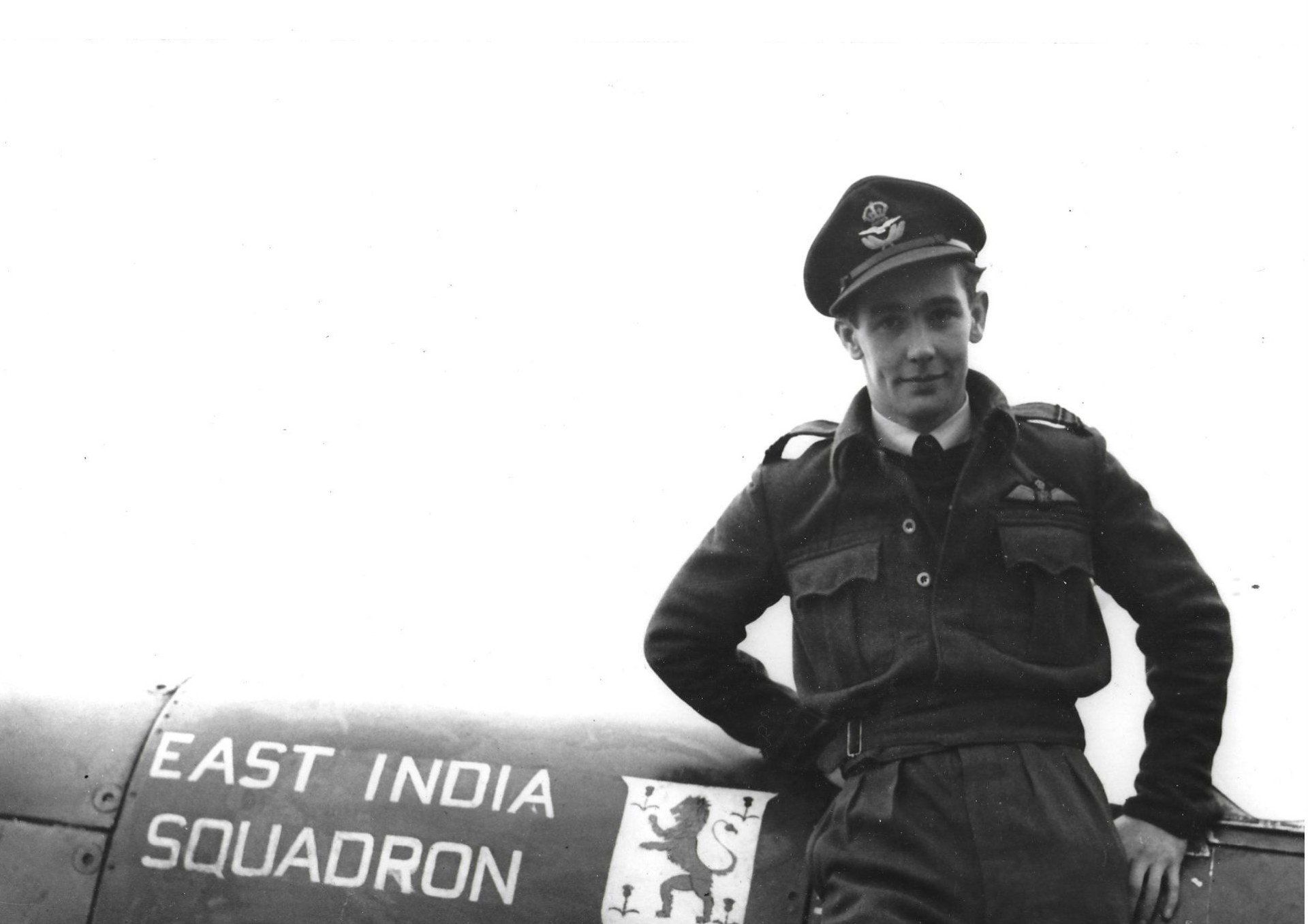
With a Spitfire from East India Squadron
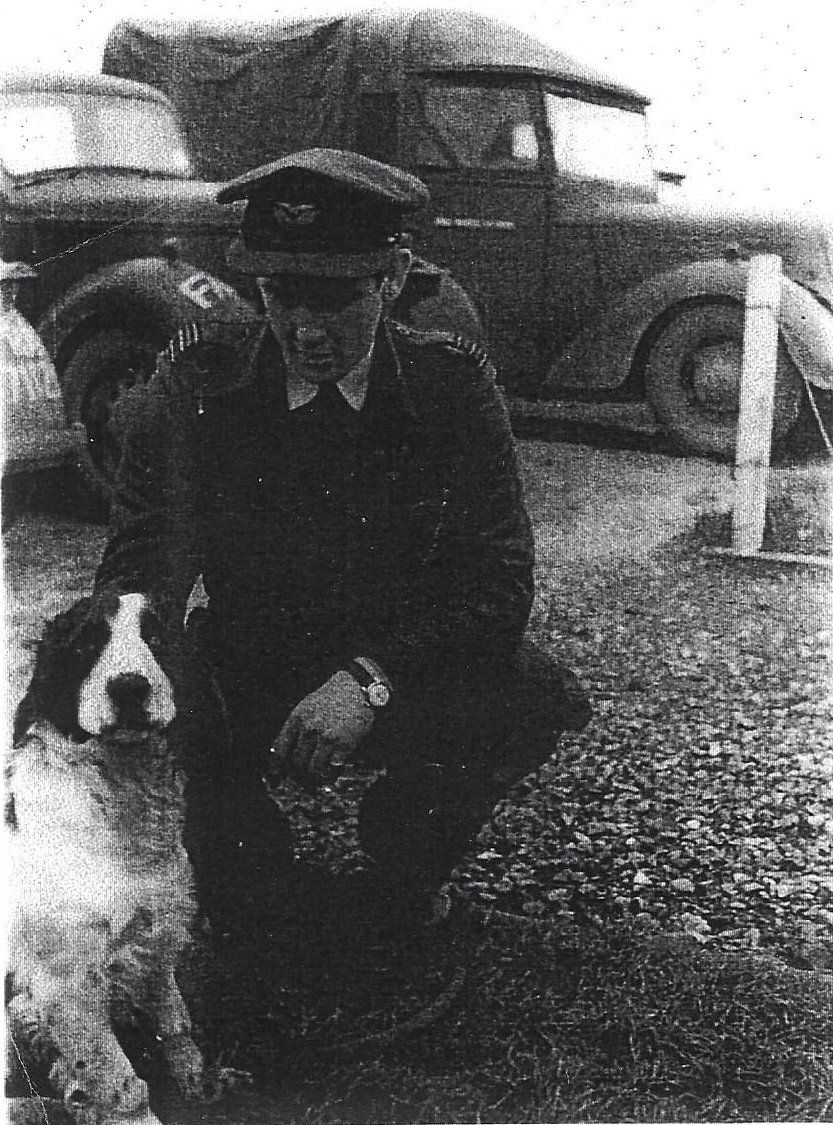
Tommy and Grog the dog at RAF Bradwell
My cousin Jean remembers that when Tommy arrived back in the UK, his uniform was pink! It must have been bleached by the Maltese sun and there wasn't the luxury of a replacement. As it was January, it was extremely cold and a woman gave him her coat. He brought back Maltese lace table mats for the family in Wakefield and a handkerchief for Jean. Before he could resume his RAF career he had to go into hospital for yet more treatment on his hands. But I expect he realised he was lucky to have survived those six months in Malta, as many of his colleagues were lost. In May 1941 he started flying again at No 56 Operational Training Unit at RAF Sutton Bridge in Lincolnshire. This time he would be trained as a fighter pilot instead of learning it on the job as he did in Malta. In September 1941 he joined 124 (Baroda) Squadron and started flying Spitfires. Baroda was one of the 'Indian gift squadrons' funded by the Maharaja Gaekwar of Baroda. After the Battle of Britain, India gave money for aircraft and entire squadrons. At first 124 was funded by Baroda and Bhopal, but the Maharaja upped his contribution to £50,000 to qualify for 124 to become exclusively 'Baroda'. It was originally based in Castletown, near Caithness in Scotland where its main aim was to defend the naval base at Scapa Flow. But in November it moved to Biggin Hill followed by Debden, Tangmere and North Weald where Tommy commanded the squadron. There he met WGG Duncan Smith, father of Iain, who would later become my godfather. When he wrote his book 'Spitfire into Battle' he asked Tommy to contribute some stories but he refused, much to his frustration and mine. In fact, there are very few references to him in books about WW2 and I always get a big lurch in my stomach when his name is not there in the index pages because I know he deserved to be.
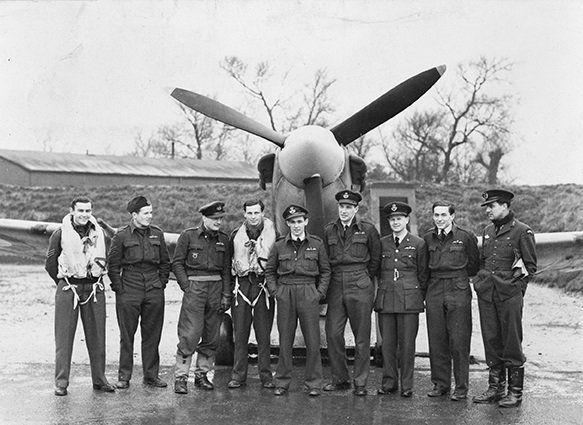
Tommy was CO of 124 squadron June 42-Jan 43

And June 43-Sept 44, even though he looks younger than all of them!
Fortunately, his log books tell a different story. In February 1942 he was part of the attempt to stop the German battleships Scharnhorst, Gneisenau and Prinz Eugen from getting through the English channel, an operation nicknamed the 'Channel Dash'. Hitler wanted the ships to return to German waters from Brest where they had been in dock for repairs and they managed to go undetected until they had almost reached Dover, by which time it was really too late to stop them. It was undoubtedly a huge fight as his log-books record two sorties to escort the bombers - the second one he writes 'ditto and more so' and then return to Eastchurch 'just'. Churchill was furious that the German ships got through and ordered an enquiry. 1942 continued with many missions over France and Belgium, escorting the bombers. On 27th March he was flying high cover to Boston bombers with his squadron over Nieupoort in Belgium when they encountered five FW190s flying below. His combat report reads 'I followed the FW190 down to about 6,000 feet and seeing that I had no chance of closing range I fired five 2 second bursts from dead astern and one deflection shot at a range of 800-1,000 yards. It turned on its back and dived vertically for cloud. I saw it go through the cloud and at the same time realised that I had only enough altitude for my own pull-out which was most uncomfortable, I got my aircraft into a level position just in the top of the cloud, about 1,500-2,000 feet. The last I saw of the FW190 it was going vertically though this cloud. Owing to the very long range I opened fire it is most improbable that I scored any hits, but also I think it is most improbable that the FW190 was able to recover from his dive in time. I therefore claim 1 FW190 probably destroyed.'
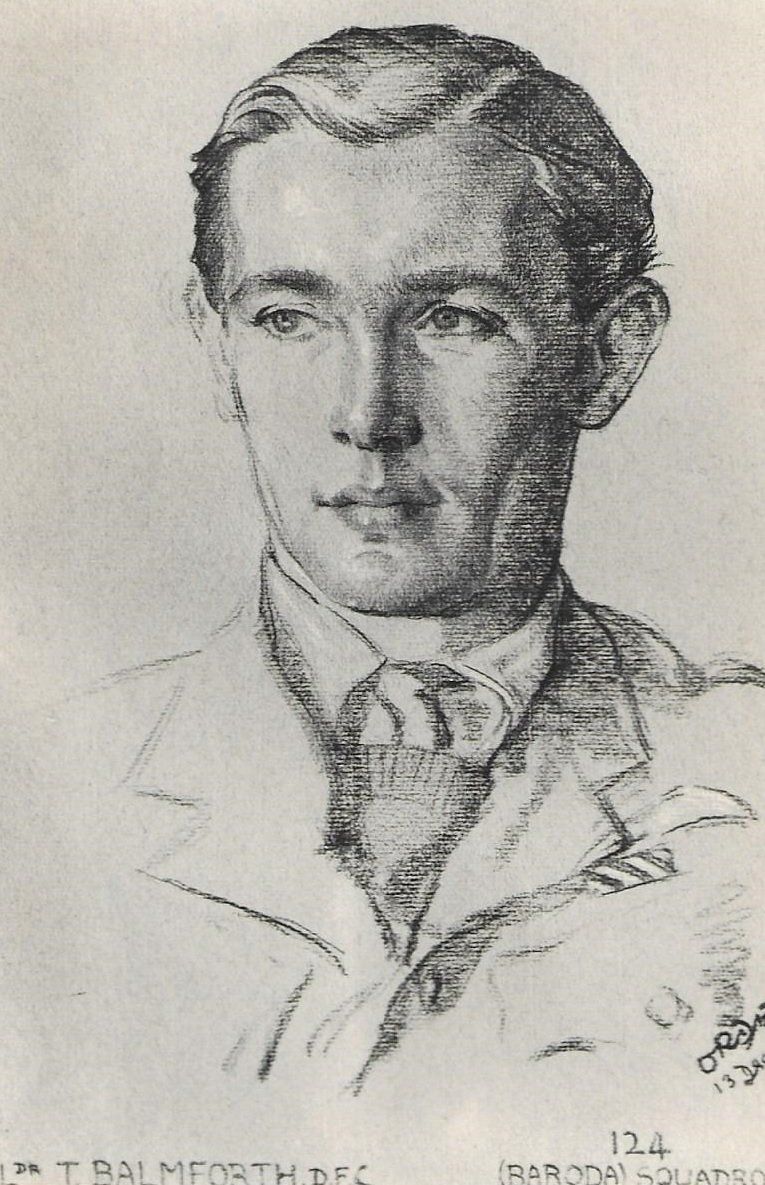
Tommy's portrait by Captain Cuthbert Orde, who drew all the famous fighter boys
Operations over the Channel -- France, Belgium and Holland followed one upon the other. Some days the Spitfires would go up on as many as three missions a day. On 19th August Tommy records four sorties on what was known as the Dieppe raid (Operation Jubilee). This was the first joint exercise between the RAF, the army and the navy in preparation for a full-scale invasion of occupied Europe. The plan was to test the German defences at Dieppe. Canadian forces had been training in the UK for two years and provided the bulk of the landing force -- 5,000 of them along with 1,000 British troops. Hundreds of ships set sail at night so the soldiers could land on the beaches under cover of darkness. The RAF Spitfires were overhead to create smokescreens and deflect German planes from attacking the large convoy of ships carrying the troops. Commanders knew that a seaborne invasion would not be easy. Because of a delay, the soldiers came ashore in daylight and there was no shelter on the wide beaches. The tanks which were supposed to land with them arrived late. The first wave of men sustained heavy casualties and the command let the second wave land because they didn't realise that all hell had broken loose. Only a few soldiers actually got into Dieppe and they quickly had to retreat. Of the 4,000 Canadians who went over only 1,000 made it back to the ships and 106 allied planes were lost. Tommy records on his first sortie 'cover assault landing' and second 'cover beaches and anchorage'. The third 'cover withdrawal' and the 4th 'cover return convoy'. With so much carnage in between, although he would only have found that out later.
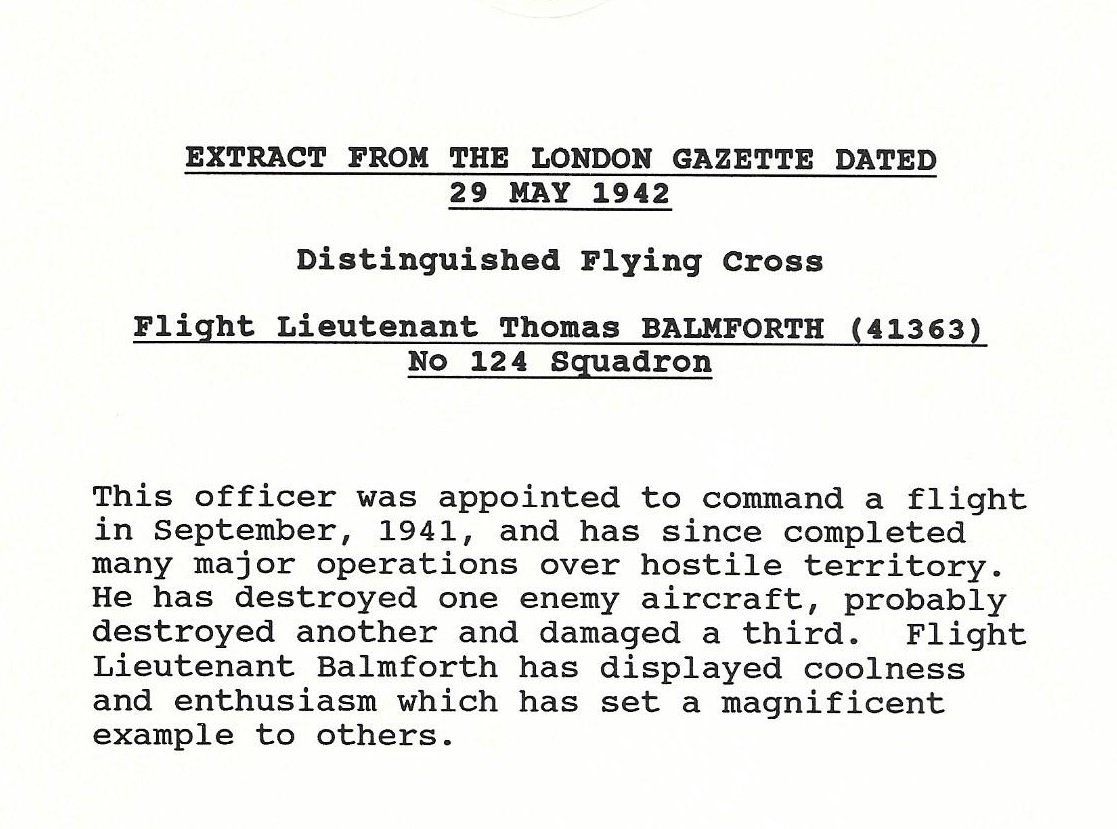
Citations: DFC awarded in May 1942
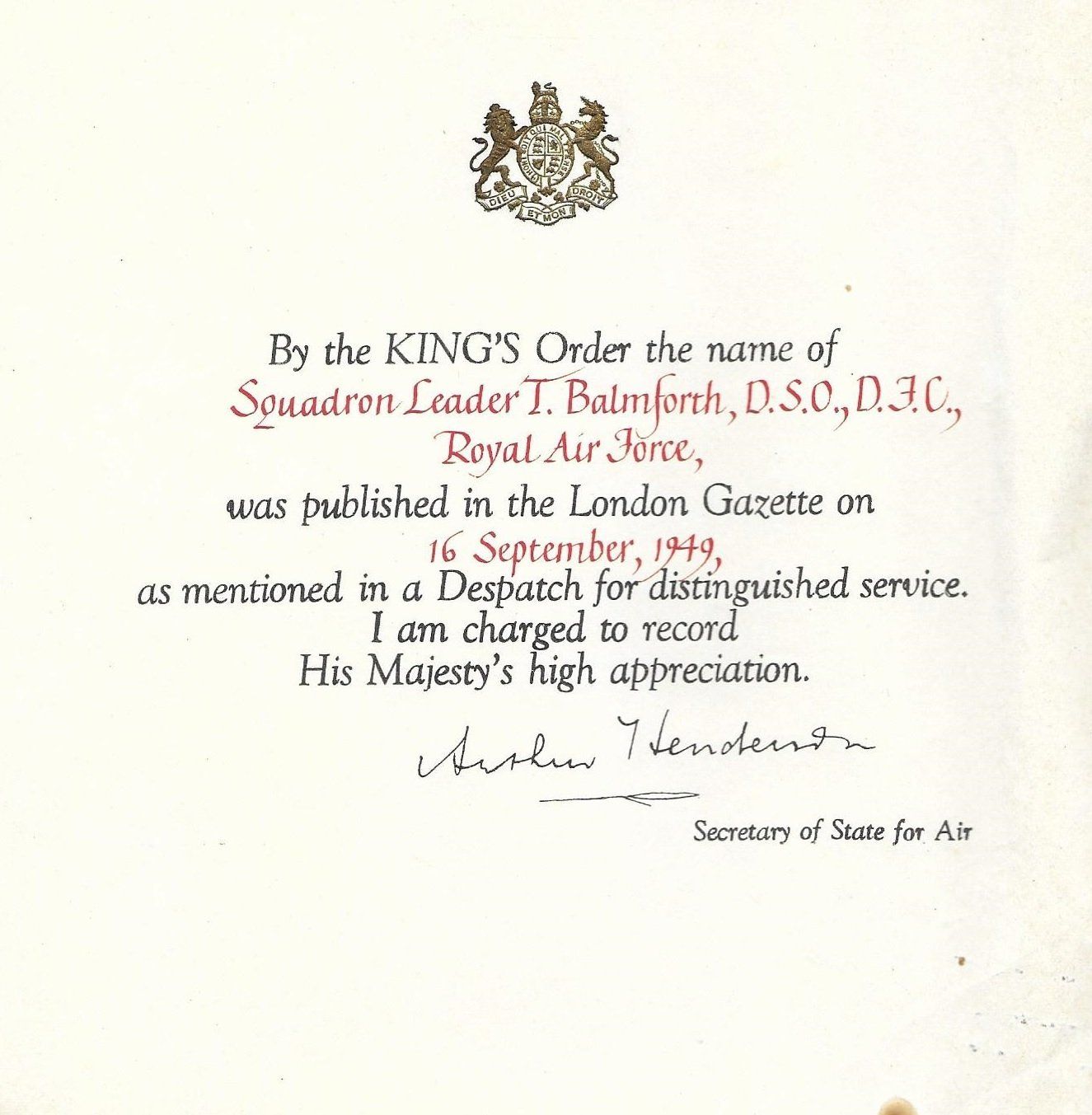
Mentioned in Despatches 1949
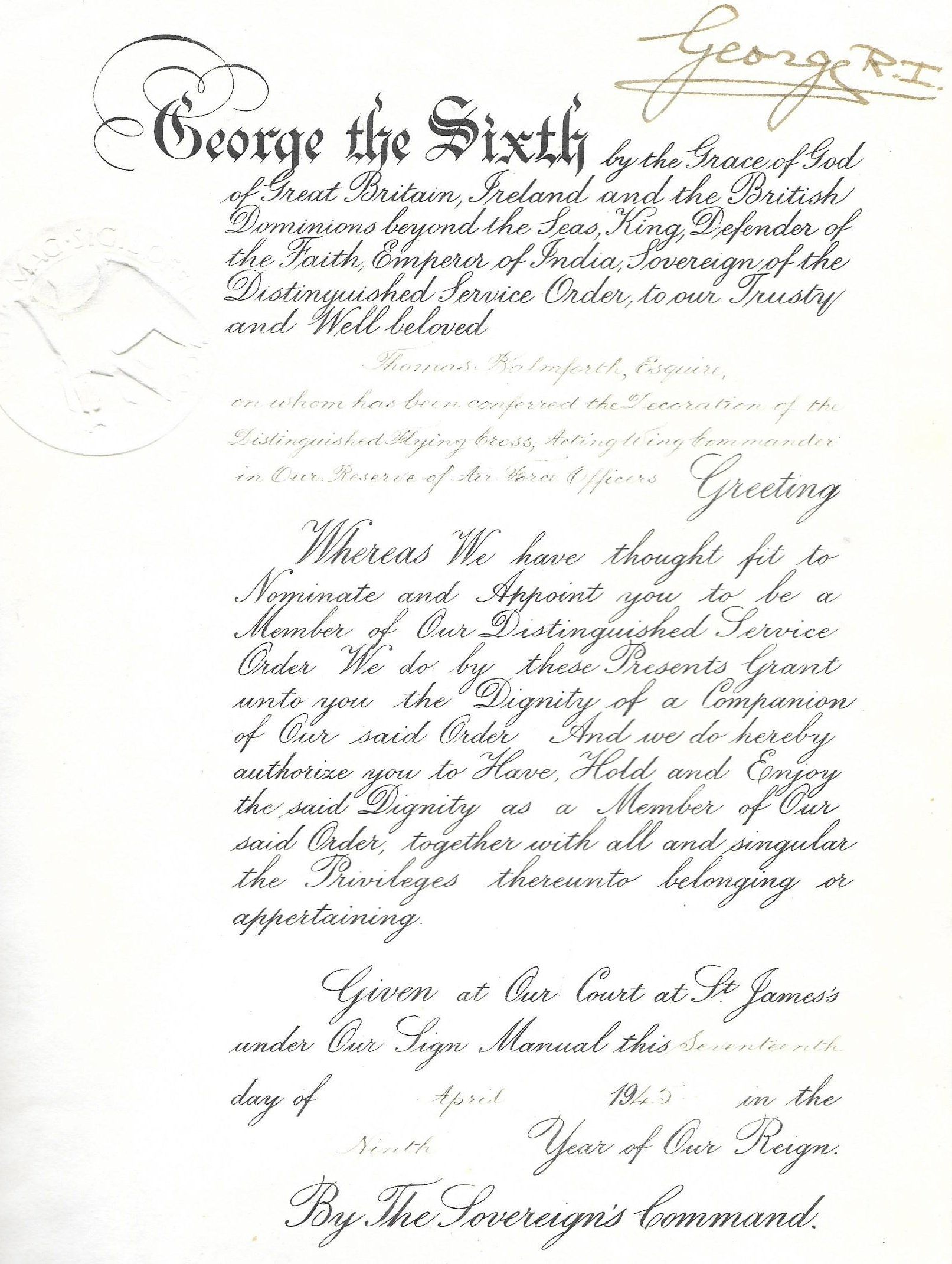
DSO awarded 17th April 1945
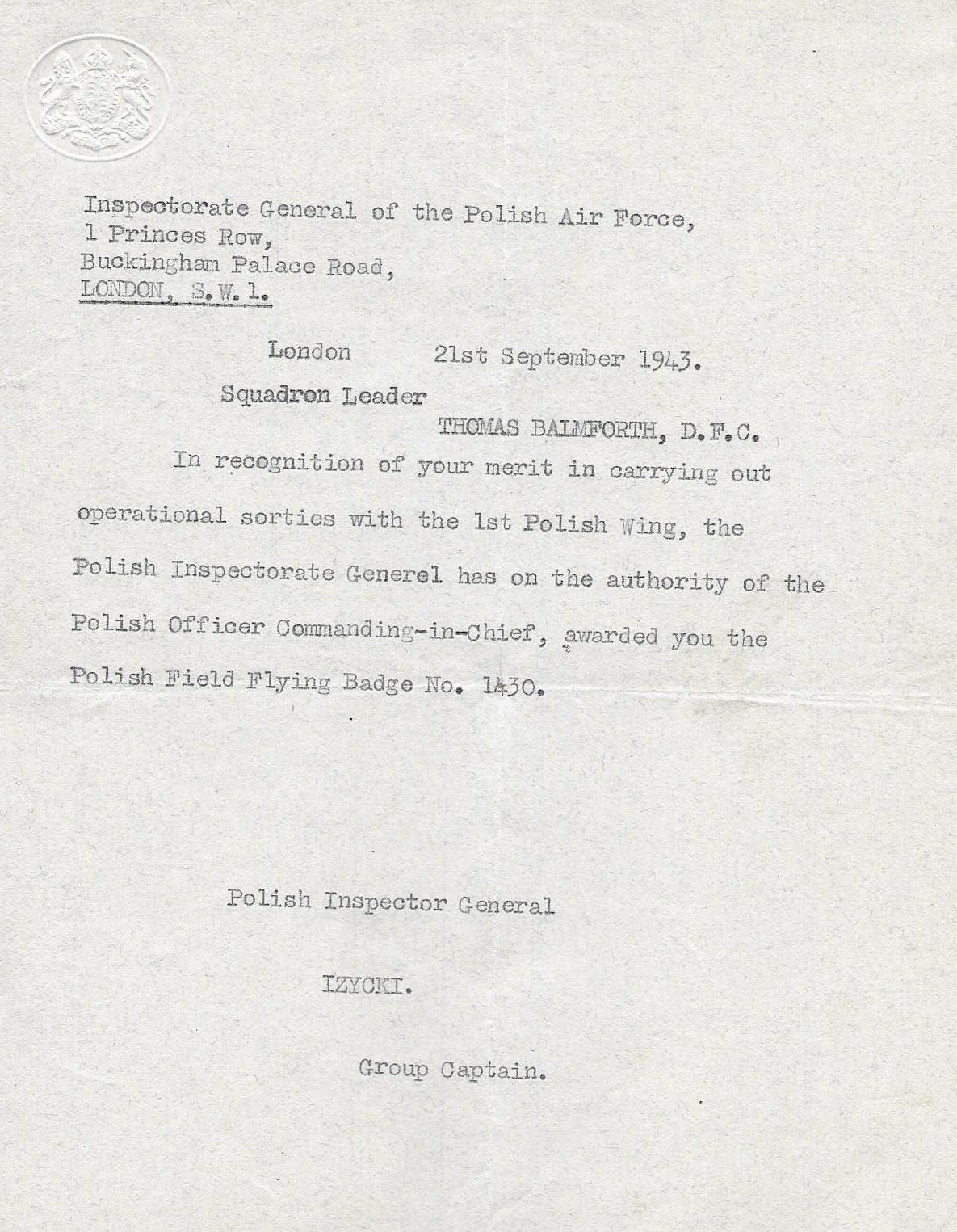
Award from the Polish Wing
The next important entry in Tommy's log-book is from October 1942 when he was sent to Central Gunnery School at RAF Sutton Bridge commanded by Wing Commander Sailor Malan, one of the great fighter pilots of WW2. No doubt he learnt Malan's famous 'Ten rules of air fighting' whilst he was there. Rule 1. Wait until you see the whites of his eyes. Rule 10. Go in quickly - punch hard- get out. At the end of the course Tommy scored an A - above average - for his marksmanship and as an instructor. On 12th December 1942, Tommy took part in Circus 242 in which 78 Boeing B17s 'Flying Fortresses' carried out a big bombing raid on the German supply and maintenance base at Romilly-sur-Seine, 60 miles south-east of Paris. The Spitfires of 124 squadron were accompanying them on this operation and Tommy records that on withdrawal cover from France he was involved in combat with enemy aircraft and shot down a FW190 (probable). In total, his squadron shot down four enemy aircraft, with one probable and one damaged. The combat report reads 'Squadron left Tangmere 1255 hours and made rendezvous with 616 squadron of Westhampnett at 2,000 feet. 616 squadron to starboard slightly above. Arrived in Le Trepet-Estratet area at 26,000ft. 3 E?A (enemy aircraft) were seen but lost before contact could be made. Height was decreased to 26,000 feet on account of ice forming inside cockpit. The Fortresses were seen coming out from France and the Squadron orbited above and behind each box in turn. Six FW190s wee intercepted when about to attack the last box of bombers and were dispersed. Flt Lt Gregson (Blue 1) discovered a fractured oxygen pipe and was unable to stay with the squadron. He remained about 10,000ft below most of the time during the operation. He found himself in the midst of a formation of about a doxen E/A (mostly FW190s but including 2 ME109s) which were attacking the bombers. He was however soon joined by the rest of the Squadron which split up and engaged the enemy. A number of combats took place in the course of which 4 FW190s were destroyed and 1 FW190 was probably destroyed. One aircraft returned with engine trouble.'
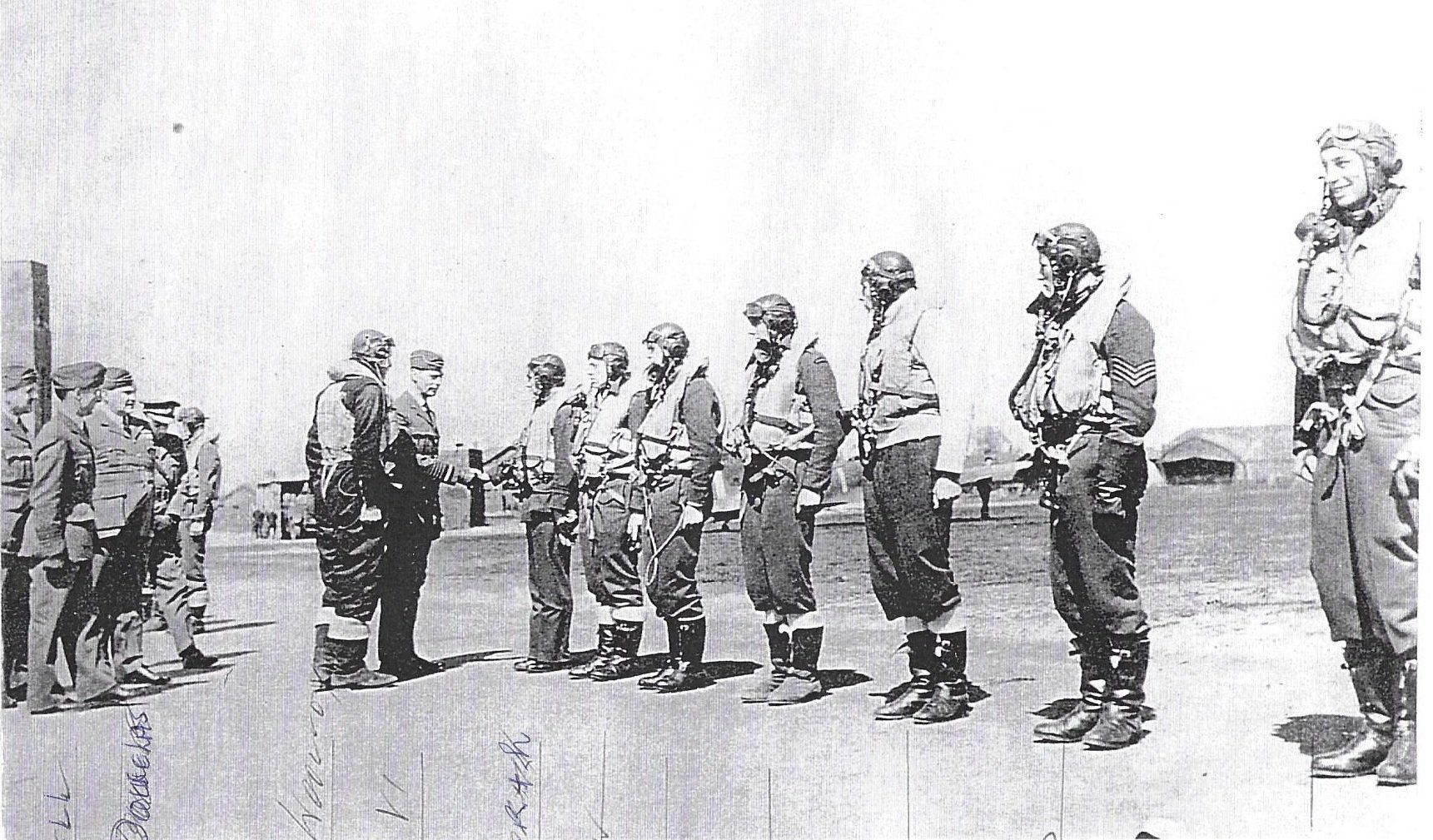
King George V1 shaking Tommy's hand at Biggin Hill, 1942 (source unknown)
There is a short interlude from operational flying when Tommy was posted to RAF Sutton Bridge as a flying instructor (Dec 42-June 43) but then he went back to 124 squadron which at that time was based at North Weald. The average life expectancy of a fighter pilot during WW2 was six to eight weeks. Considering the fact that Tommy was flying so many sorties over France on a daily basis (sometimes three or four a day) he was very lucky to survive these odds! Many of the entries in his logbooks are codenamed Ramrod which was a short-range bombing attack to destroy a ground target. Lille, St Omer, Cherbourg, Abbeville, Evreux, Cambrai are just a few of the destinations. On 9th September 1943 Tommy took part in Operation Starkey described in his log-book as an amphibious cock-up. Others have described it as 'the invasion that never was.' The idea was to fool the Germans into thinking that an invasion of the Pas de Calais was imminent. At daybreak on the 9th September there was a level of activity not seen since Dunkirk. British and Canadian troops, supported by the Navy, RAF and USAAF were to mount an assault on Boulogne which could become real if the circumstances on the day were right. But in the end the operation was watered down through lack of resources and opposition from military top brass including Bomber Harris who described it as 'at best harmless play-acting'. It didn't frighten the enemy but it did cost many French lives.
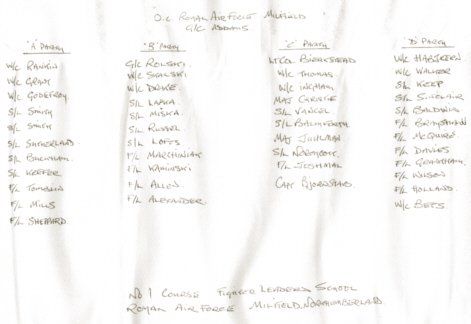
Milfield alumni. S/L Balmforth is third column, 6th down
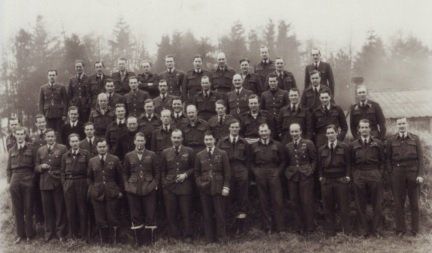
Tommy is third from the right, front row
In February 1944, Tommy was sent to Fighter Leader School at Milfield in Northumberland. He was on Air Support Course number 1 with some of the other illustrious pilots who, to define their calibre, had 378 kills between them. Plans for the invasion of Europe had already been established and the ideal dates set. Now the RAF needed to train the squadron leaders, men who were already experienced in fighting and could lead air operations in support of the ground forces below. Everything was pointing towards the Allied invasion of France and on 6th June 1944 Tommy records 'D-Day patrol', followed by several entries of 'escort Dakotas to beach-head'. The Allies had landed but failed to take the all-important town of Caen. On 18th July he records 'escort 1,000 Lancs Caen!' which was the day of Operation Goodwood, the huge Allied offensive to take the town led by General Montgomery. Starting with dawn raids, 4,500 Allied aircraft flew over the area, the Spitfires escorting Lancasters and Halifaxes. 6,000 tonnes of bombs were unleashed before the tanks could move into the area. It seems unreal now but the aerial photos of the devastation which are available online bear witness to the extent of the operation and its importance in the re-taking of Normandy.
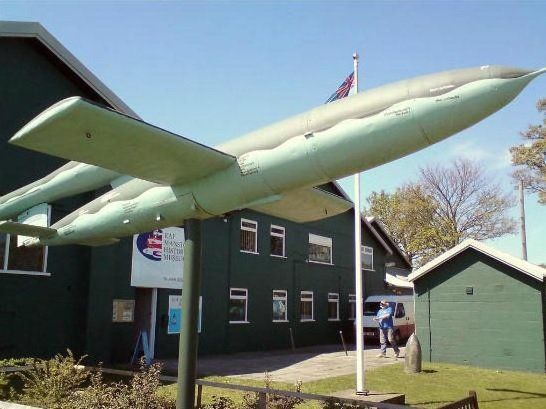
German V1 flying bomb at RAF History Museum, Manston
In September 1944 Tommy was promoted to Wing Commander and appointed leader of the Manston Wing in Kent. The base was home to the first operational jet squadron and their mission was to attack the V1s and V2s which the Germans deployed earlier in the year. These were the 1944 equivalent of a cruise missile and were being used to deadly effect. In all, 10,000 were fired on London and surroundings. But although they claimed hundreds of lives, the strategy was too little, too late on the part of the Germans and it wasn't enough to win them the war. Life at Manston can't have been easy -- the men were billeted in damp wooden huts and was frequently damaged by enemy fire. No wonder Tommy was tasked with keeping up morale!
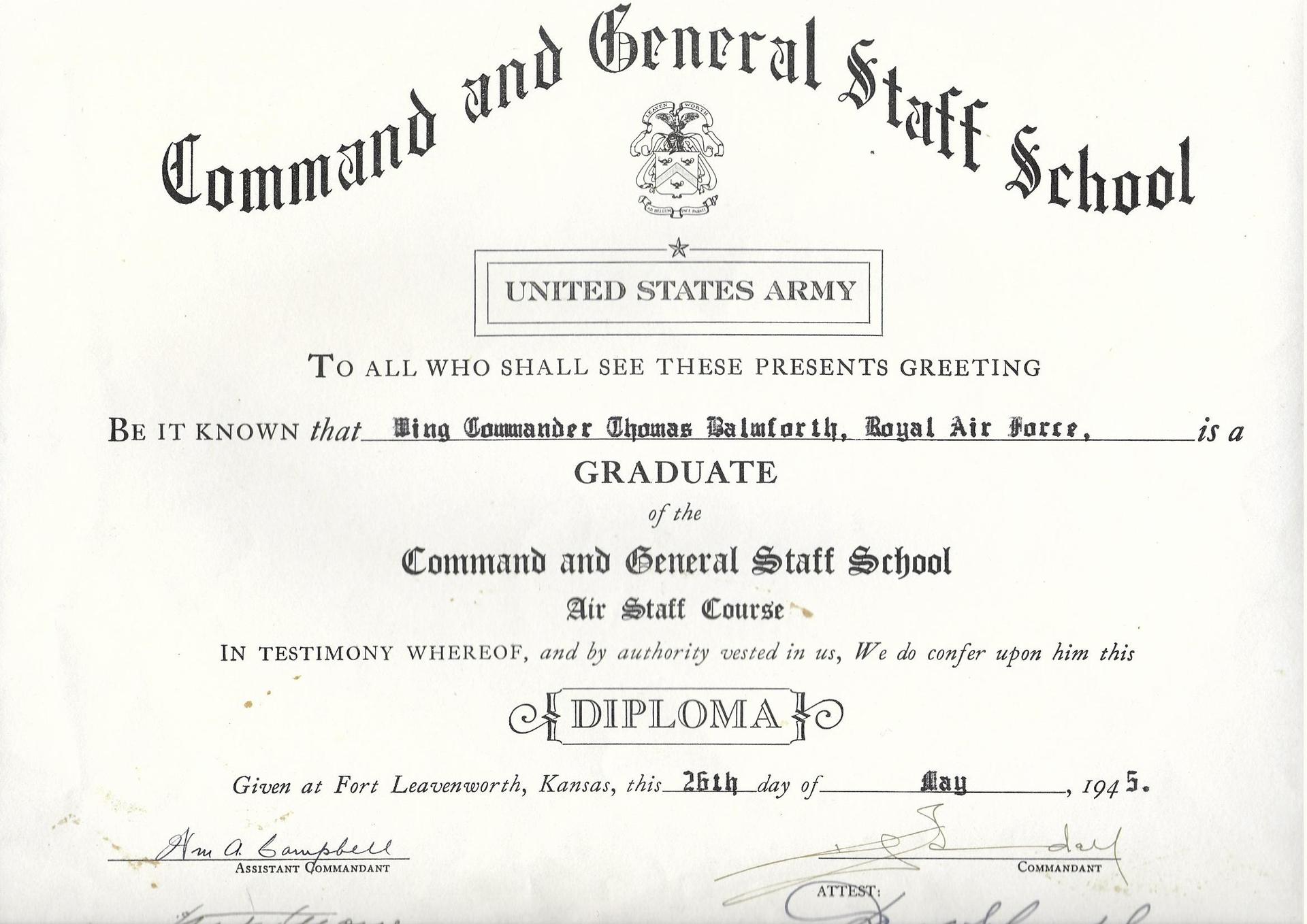
Diploma from US Army course in Kansas
In March 1945 Tommy was awarded his DSO for his leadership of the Manston Wing. At the same time he was sent on an air staff course at the Command and General Staff School at Fort Leavenworth, Kansas. In an extract from a letter to the Maharaja of Baroda, Sq Ldr G.W. Scott who took over command of 124 squadron wrote 'We were very sorry to see him go, but he had earned a well-deserved rest and it was particularly gratifying to the Squadron to learn later that he had been awarded the DSO for his work in Fighter Command.' He returned from the USA just in time for VE Day.
There are six chapters so far, please click on the strap at the top to go into them! You can contact me on k.balmforth@btinternet.com.